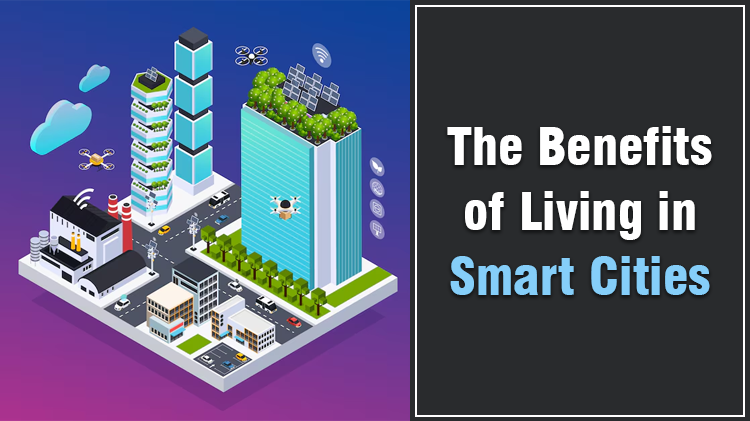
Urban living is changing quickly in today's fast-paced world, and smart cities are leading the way in this change. As digital infrastructure, data-driven governance, and sustainable urban design become more prevalent, smart cities provide a number of benefits that improve citizens' quality of life. This blog examines the advantages of residing in smart cities and how they are influencing contemporary living.
1. Efficient Public Services
Having access to effective public services is one of the biggest advantages of living in a smart city. Smart cities optimize trash management, transportation systems, energy use, and emergency services by utilizing IoT (Internet of Things) and sophisticated data analytics. Better public safety, less traffic, and quicker reaction times result from this.
2. Sustainable Living
Through efficient resource management, green architecture, and renewable energy sources, smart cities place a high priority on sustainability. The carbon footprint is decreased by smart grids, automated lighting, and well-functioning public transportation. In addition to protecting the environment, these eco-friendly projects also save residents' utility costs.
3. Enhanced Quality of Life
Enhancing inhabitants' everyday life is a major advantage of living in smart cities. Comfort and convenience are offered by digital services, smart houses, and high-speed internet. People can save time and save in-person visits by using online resources for administrative, educational, and healthcare services.
4. Improved Transportation
Intelligent transportation solutions including app-based taxi services, smart traffic signals, and real-time bus tracking are implemented in smart cities. These developments contribute to shorter commutes, less traffic bottlenecks, and safer commutes. With designated pathways and intelligent crosswalks, several communities also encourage walking and bicycling.
5. Safer Communities
In smart cities, public safety comes first. Law enforcement can react to crises more rapidly because to integrated communication systems, AI-powered analytics, and surveillance cameras. Furthermore, a more secure atmosphere is produced, particularly at night, via community alert systems and smart street lighting.
6. Economic Growth and Job Opportunities
Jobs in technology, engineering, urban planning, and sustainability are created as smart cities grow. Because of improved connectivity and easier access to digital infrastructure, startups and tech enterprises frequently flourish in these types of settings. Individuals and communities both gain from this economic boost.
7. Citizen Engagement and Participation
Smart cities promote active public participation in governance via the use of technology. Residents can report problems, provide input, and take part in decision-making processes through digital platforms and mobile applications. Local governments become more responsive and transparent as a result.
8. Better Healthcare and Education
Data-driven public health systems, telemedicine, and online education are essential elements of smart cities. Virtual consultations, individualized learning opportunities, and prompt medical advice are all advantageous to residents. These services serve as a link between personal requirements and urban amenities.
Living in a smart city has several advantages. Smart cities are changing the way urban environments operate, from better safety and economic prospects to sustainable services and efficiency. The future of urban living will be more inclusive, robust, and convenient as more areas make investments in smart technologies. Living in a smart city is a commitment to a more intelligent, secure, and sustainable future.





3 Comments